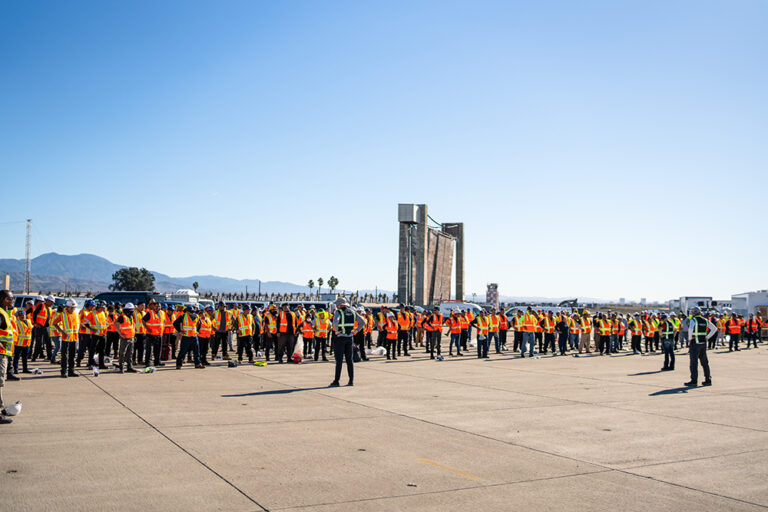On November 7, 2023, the historic Marine Corps Air Station Hangar in Tustin, CA, one of the largest wooden structures of its kind, was consumed by a catastrophic fire. The blaze dispersed asbestos and other hazardous materials across a six-mile radius, impacting over 2,500 homes, 29 schools, and numerous public areas. With strong winds exacerbating the spread, the contamination demanded a large-scale, rapid-response solution to mitigate the widespread health risks and environmental hazards.
ATI’s swift action allowed the majority of affected schools, parks, and public spaces to be cleared within days, with ongoing support provided as needed to ensure long-term safety. The project, executed over the holiday season, saw ATI deploy over 500 certified professionals who, through a zoning strategy and collaboration with environmental consultants, systematically cleared and restored each impacted area. Today, ATI remains on standby to assist Tustin, demonstrating a commitment to both immediate and lasting community well-being.
The Situation
The Tustin Hangar fire marked a local state of emergency, as hazardous debris accumulated in residential and public spaces, raising concerns among city officials, residents, and environmental agencies. The 85-acre site of the historic hangar, along with surrounding neighborhoods and public right-of-ways, required prompt and specialized environmental hazard management, including asbestos abatement and debris removal on an unprecedented scale.
The Solution
ATI’s National Response Services team responded by rapidly expanding its workforce, certifying 125 additional employees in asbestos abatement within a week. With emergency response trailers loaded with essential equipment, ATI established a command center, complete with decontamination chambers and airlock enclosures, to support the multi-phased cleanup. Partnering with city officials, federal agencies, and environmental experts, ATI implemented a zoning approach that prioritized high-risk areas first, ensuring transparent, coordinated, and thorough remediation. This structured response was key to protecting public health and restoring Tustin’s impacted neighborhoods and facilities.







